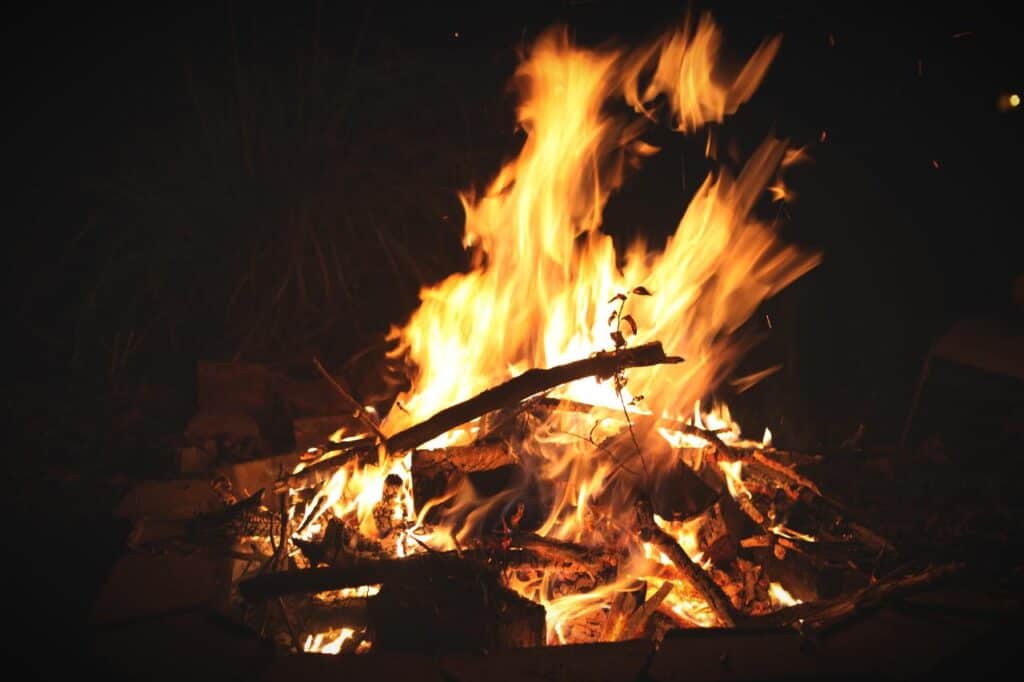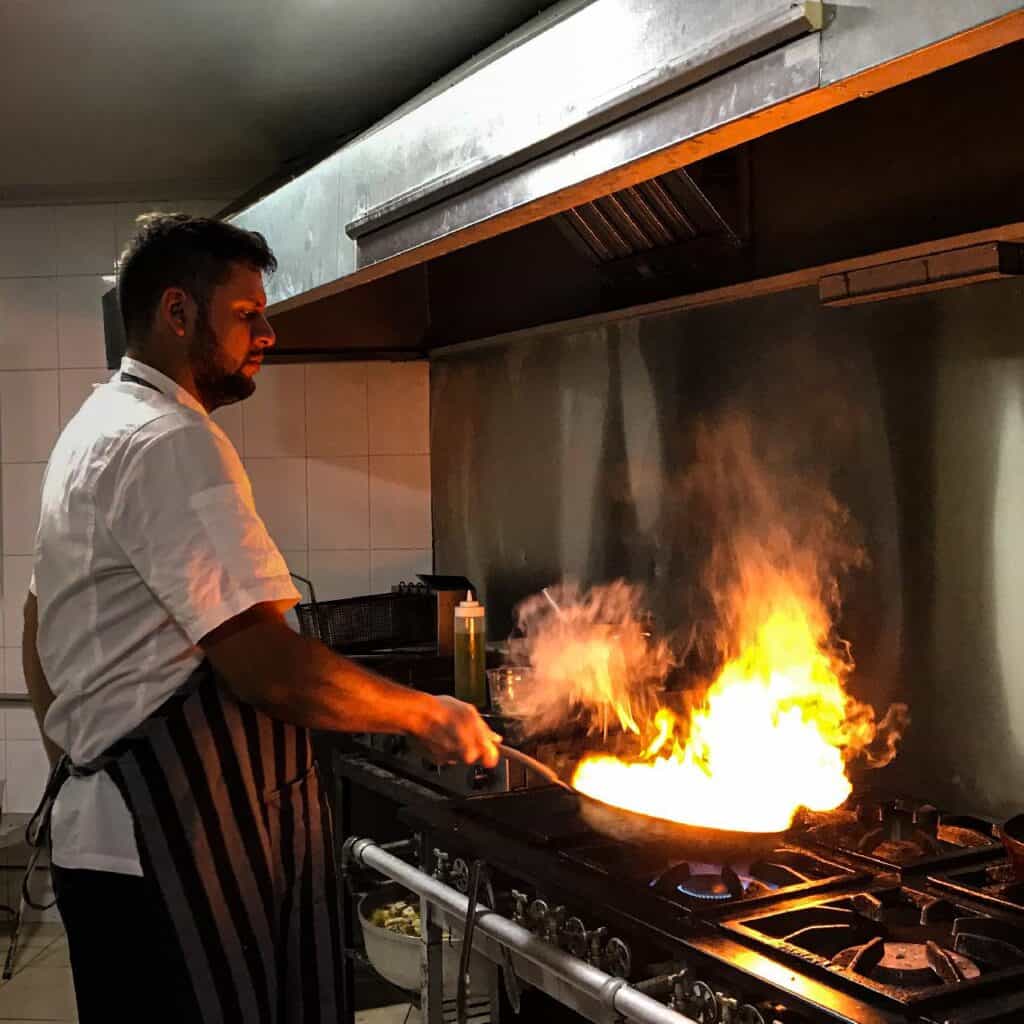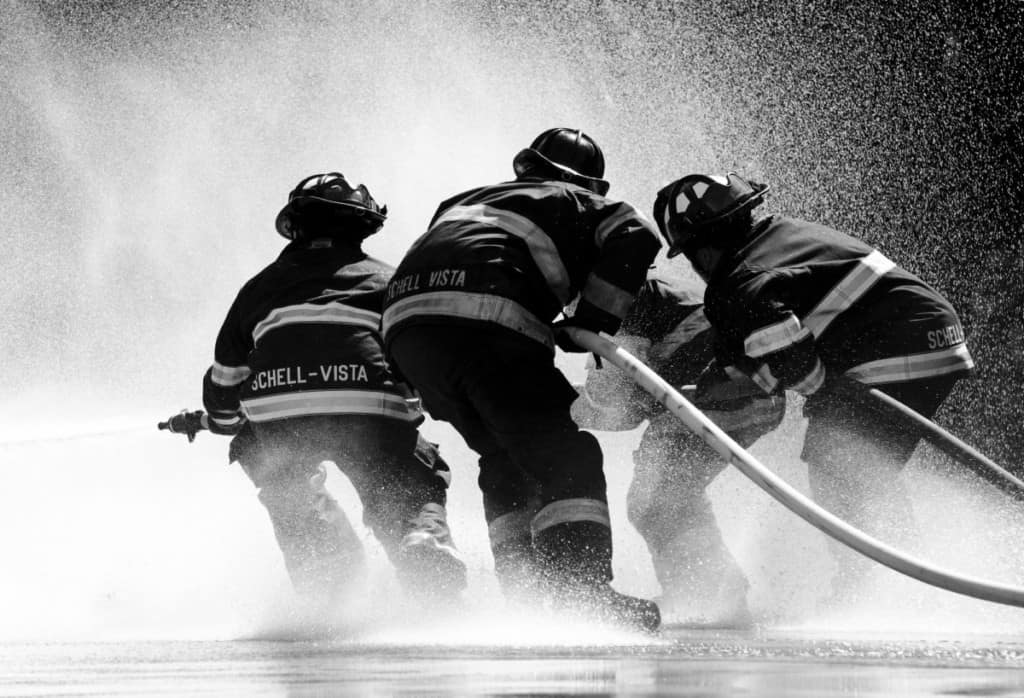When we think of putting out fires, we almost immediately think about using water. Why shouldn’t we? It’s what we see used in movies and cartoons every time that something burns, but it’s not quite that simple and you need to be careful about what type (class) of fire you put out with water. There is a substantial risk to your health if you get this wrong too.
There are 5 classes of fire (A, B, C, D and K). Each class of fire refers to the burning of specific materials. Class A fires, those which involve the burning of ordinary combustibles, are best extinguished with water, though in some circumstances water can work on other classes of fire.
The different types of fire need to be treated different. There are certain ways of handling and extinguishing each class of fire. Here’s what you need to know about this.
Your # 1 priority is keeping your family safe. As a firefighter, I recommend everyone has updated smoke detectors that don’t require battery changes, like these ones from Kidde, a fire extinguisher, like this one from Amerex, and a fire escape ladder if you have bedrooms above the first floor, I recommend this one from Hausse.
Also read: What Do Firefighters Use to Put Out a Fire?
The 5 Classes of Fire

As we’ve just noted there are 5 classes of fire and you should be aware of each. Not all of these classes are fires you are likely to come into contact with and, in particular, most people will never see a Class D unless they work in a specific industry.
The five classes of fire are:
- Class A. A class A fire is one that involves ordinary solid material. So, this could be anything from wood to clothing. You are most likely to encounter this kind of fire in the home or the office when a fire is caused by an accident. For example, you decide to have a log fire in your living room and then some burning wood falls onto the rug which catches fire. This is a class A fire.
- Class B. These fires do not involve solid materials, but rather flammable liquids. You may well encounter these in the home particularly working in your garage. Such fires may involve alcohol or gasoline. However, cooking oil (Class K) is exempt from this classification when fires are properly classified.
- Class C. If you have a class C fire, then it involves electricity. These are fairly common in places with old and worn wiring or when a faulty appliance suddenly appears to catch fire by itself. The most important thing to do in the event of an electrical fire is to disconnect the electricity supply (if you can’t get to the plug socket, don’t try, flick the circuit breaker or simply switch the household supply off). This makes it less likely that you will be electrocuted when tackling any blaze.
- Class D. You are very unlikely to find yourself dealing with a Class D fire as these fires involve flammable metals. These metals are, generally speaking, only used in industrial environments and most people don’t keep large stocks of magnesium or sodium at home because they have little practical value as much as anything else.
- Class K. This is a special classification for cooking oils and fats which have a higher than average flash point and which most commonly occur in industrial kitchens when pans or fryers are left unattended and become overheated. It is also possible to find a class K fire in your own kitchen if you are particularly careless about keeping an eye on things. As soon as you can, in the event of a class K fire, you want to remove the pan from the heat below it which will be driving the fire (or at least cut the fuel to the heat).
Here is a better explanation of the fire classes:
Also read: How To Put Out An Electrical (Class C) Fire: Firefighter Approved
How Is A Fire Extinguished?
A fire requires three things in order to burn:
- Heat
- Fuel
- Oxygen.
If you remove any of these three things, then the fire can no longer sustain itself.
If a fire is left to burn unchecked, it will eventually run out of fuel and go out.
If you drop the temperature substantially then it may remove the heat and the fire goes out.
If you can somehow cover the fire so that no more air can get to it, you can remove the oxygen and the fire goes out.
These are the only methods to successfully extinguish a fire and each class of fire is extinguished in a different manner.
What Type Of Fire Can Be Put Out Safely With Water?
You can use water to safely extinguish a class A fire. When you throw water on say, a pile of burning books, then you remove the heat from the fire and with a bit of luck it goes out.
If it doesn’t go out and the fire hasn’t spread out of control, you can keep adding water until it is fully extinguished.
There is nothing dangerous about fighting class A fires with water but you should be aware that smoke is more dangerous than fire (3 times as deadly to human beings, in fact) and that if you are in a smoky enclosed space, you should not try to fight the fire for very long as you may succumb to smoke inhalation.
The best advice with any kind of fire is that you only tackle it if you feel confident to extinguish the fire and that if your efforts don’t quickly work, it is better to call for help and move somewhere safe until that help arrives.
Also read: What Type Of Fire Can Be Put Out Safely With Water?
Which Fires Are Dangerous To Put Out With Water And Why?
Class B fires are made up of flammable liquids. If you were to throw water on a Class B fire, you might very well remove the heat and extinguish the fire but you would be equally likely to cause the flammable liquid (which often won’t mix very well with water – remember “oil and water don’t mix?”, well, it’s true) to spray all over the place while it is on fire.
As you’d expect if this happens, you will spread the fire and it will very quickly be completely out of control.
Here is some good info on extinguishing Class B fires:
Instead of water, you should use a Class B fire extinguisher (which may contain foam, powder, or carbon dioxide) and use this to cut off the oxygen supply by fully coating the fire and the burning material.
Class C fires are electric fires. If you can’t cut off the electricity then when you spray water all over the fire, there is a good chance of making a circuit and electrocuting yourself and don’t grab that Class B fire extinguisher either – foam can also create a circuit that electrocutes you.
So, use a Class C extinguisher filled with carbon dioxide or powder if you need to tackle an electrical fire.
It is best to have an ABC extinguisher handy in your home and office, as it can be used on Class A, B, and C fires safely and effectively. Here is a good one from Amazon. Have a few stashed around your house.
Class D fires will become explosive if doused in water. The metal fires are so hot that they reduce the water to oxygen (more fuel for the fire) and hydrogen (highly reactive and yes, explosive, gas).
Here is a Class D Magnesium fire:
That means you must only attempt to extinguish a Class D fire with a dry powder Class D extinguisher. Doing otherwise can be very dangerous.
Here is an example of a Class D extinguisher. Less commonly needed, but important when you do.

Finally, a Class K fire offers a similar hazard to a Class B fire – attack an oil fire with water and you’re just going to create lots of small blobs of burning material that will be much harder to extinguish.
So, use a wet chemical extinguisher (Class K) to tackle it, instead. Or you can cut off the oxygen by covering a burning pot with a lid.
Here is a Class K fire extinguisher. Good to have in or near the kitchen.
Conclusion
What type of fire can be put out safely with water? You should only attempt to extinguish class A fires with a water extinguisher. These are the most common fires you will encounter in the home or office environment that are caused by accidents – think dropping a poorly extinguished cigarette into a garbage can full of paper.
However, you must ensure that you do not tackle any other type of fire with water or a water-based Class A fire extinguisher. If you do, you can risk spreading the fire or electrocution or even worse turning the fire into a major explosion if you are dealing with a metal fire. Fire extinguisher safety is very important and if you are not confident to tackle a fire, it is best to walk away and call the fire service, instead.
Related Articles:
Why Do Firefighters Use Foam Instead of Water?
Can a Fire Extinguisher Be Used More Than Once?
6 Best Fire Extinguishers For Workshop/Garage/Welding Use
Should You Open Windows During A Fire? Is It A Good Idea?

